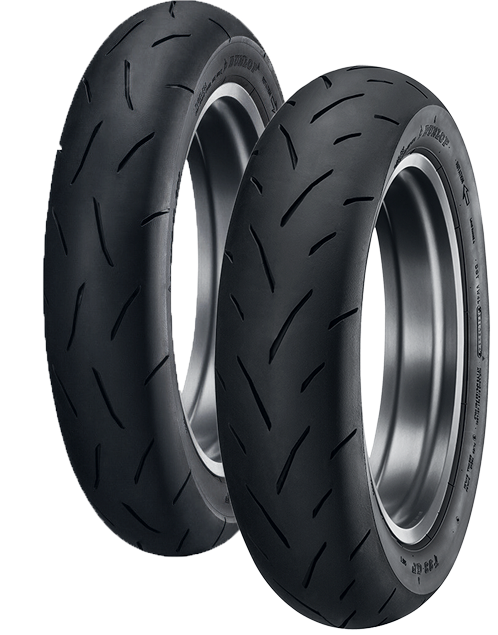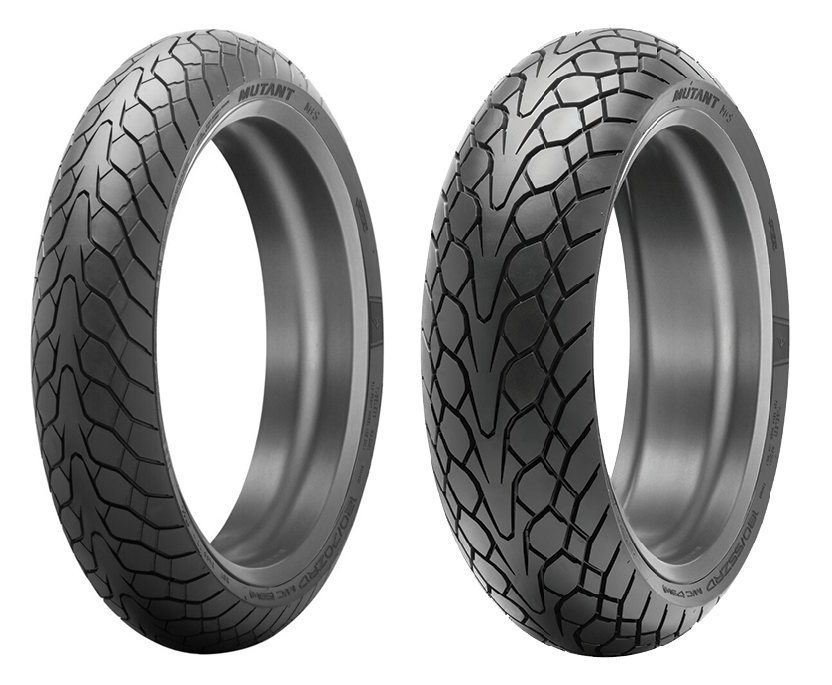Climate-Based Motorcycle Tyre Guide for All Seasons
Climate-Based Motorcycle Tyre Guide for All Seasons
Blog Article
Explore the Significance of Choosing the Right Tyres With Our Interesting Motorcycle Tyre Guide
Selecting the ideal tires is crucial for any kind of Motorcycle lover. The best tyres enhance performance, enhance safety, and add to total convenience throughout trips. Understanding the different kinds, sizes, and maintenance techniques can substantially affect your riding experience. As motorcyclists face diverse surfaces and conditions, knowing how to pick the finest tyres comes to be vital. What factors should be considered to assure peak performance? The answers wait for in the following areas.
Comprehending Different Kinds Of Motorcycle Tyres
Although choosing the appropriate type of Motorcycle tire may seem overwhelming, recognizing the various alternatives offered can greatly boost a biker's experience. Motorcycle tyres are mostly categorized into 3 types: off-road, sporting activity, and touring. Touring tyres are made for long-distance travel, using sturdiness and convenience on highways. These tyres include a tread pattern that offers superb grip and security, making them ideal for various weather condition conditions.Sport tires, on the other hand, prioritize performance and handling, including a softer rubber substance that enhances hold throughout cornering. They are ideal for bikers that enjoy perky rides on twisty roads or racetracks. Off-road tyres are tailored for tough surface, with a hostile tread pattern that offers traction on loose surface areas like dust or crushed rock.
Assessing Your Riding Style and Requirements
Comprehending exactly how different riding conditions impact performance is important when assessing riding style and needs. This evaluation can guide riders in picking the ideal tire types that line up with their particular requirements. By considering factors such as surface and weather condition, bikers can make informed decisions for perfect safety and experience.
Riding Conditions Influence
As motorcyclists navigate various surfaces and climate conditions, understanding just how these variables affect Motorcycle efficiency ends up being important. Different riding environments, such as damp, dry, or off-road, demand specific tyre features to ensure security and perfect handling. For example, damp conditions call for tires that use far better grip to avoid hydroplaning, while off-road riding necessitates robust walk patterns for traction on loosened surfaces. Furthermore, temperature level variations can influence tyre pressure and performance, needing modifications based upon the conditions encountered. Bikers must examine their typical courses and atmospheres when picking tyres, as the right option can considerably enhance their riding experience, guaranteeing both comfort and safety and security in varied situations. Matching tires to riding conditions is vital for efficient Motorcycle performance.
Tire Kind Summary
Understanding the different sorts of Motorcycle tires is vital for riders intending to boost their performance and safety and security. Each tire type caters to certain riding designs and problems. Sport tires, made for high grip and agility, are optimal for hostile riding and track days. Visiting tyres prioritize durability and comfort, making them appropriate for long-distance trips. Off-road tires include much deeper footsteps for grip on irregular surface areas, appealing to adventure hunters. Cruiser tires supply a smooth ride, typically stressing appearances for cruisers and choppers. Dual-sport tyres blend features of both on-road and off-road tyres, serving versatile bikers. Assessing private riding styles and needs assurances that the best tyre type is picked, ultimately improving general riding experience and safety and security.
The Influence of Tire Size on Efficiency
Tyre size considerably influences a bike's total efficiency, impacting handling, traction, and security. The size and width of tyres can especially modify a bike's dynamics. Bigger size tyres can boost high-speed performance, providing smoother rides and boosted stability throughout straight-line travel. However, they might likewise call for more effort for fast maneuvering. On the other hand, narrower tyres have a tendency to provide far better agility and responsiveness, making them perfect for limited corners and detailed riding conditions.Additionally, the element proportion, which connects to the tire's elevation, plays an important function in performance features. A lower account tyre might enhance cornering security however can compromise convenience due to decreased padding. Ultimately, picking the suitable tyre dimension aligns with the cyclist's preferences and meant usage, whether for sport, touring, or off-road riding. Understanding these subtleties warranties peak performance and enhances the general riding experience.
Tread Patterns and Their Significance
Tread patterns on Motorcycle tires play a necessary role in establishing performance, affecting aspects such as grip and handling. Various sorts of walk designs satisfy numerous climate condition and surfaces, guaranteeing perfect traction and security. Comprehending these patterns is necessary for cyclists seeking to improve their Motorcycle's performance and security.
Sorts Of Footstep Patterns
The performance of a bike is substantially influenced by the kind of tread pattern on its tyres. Numerous tread patterns offer specific functions, dealing with various riding problems. Glossy tyres feature a smooth surface, suitable for completely dry problems and auto racing, providing maximum hold. On the other hand, tires with deep grooves and complex patterns are designed for wet or off-road problems, enhancing water displacement and traction. Some walk layouts, such as dual-purpose tires, strike a balance for both light and on-road off-road use. motorcycle tyre guide. Furthermore, sporting activity tires commonly possess a more hostile step pattern, enhancing cornering stability. Understanding these sorts of walk patterns aids motorcyclists pick the proper tires for their intended riding experiences and environmental problems
Influence on Performance
Selecting the appropriate walk pattern greatly influences a motorbike's efficiency in different riding conditions. Walk patterns are designed to optimize grip, taking care of, and security, straight influencing cornering capability and braking efficiency. For example, a much more aggressive tread layout boosts grip on irregular surface areas, making it suitable for off-road riding. Alternatively, a slicker walk pattern promotes smoother rides on paved roads, reducing moving resistance and enhancing fuel performance. The deepness and arrangement of grooves additionally play a crucial role, enabling efficient water displacement and minimizing hydroplaning dangers. Ultimately, picking a proper step pattern tailored to details riding atmospheres and designs guarantees enhanced control, security, and total riding experience, highlighting the importance of this decision for Motorcycle fanatics.
Weather and Terrain Viability
Climate condition and surface types considerably affect the suitability of Motorcycle tyre walk patterns. In damp problems, tyres with deeper grooves and particular patterns are crucial to direct water away and minimize the threat of aquaplaning. Conversely, a flatter tread design offers suitable surface area call for completely dry roadways, enhancing grip and stability. For off-road riding, knobby tyres offer enhanced traction on loosened surface areas like mud and crushed rock. Each walk pattern offers a distinctive objective; consequently, picking the ideal that site tire is essential for efficiency and safety and security. Cyclists need to consider their typical riding environment-- whether city, country, or differed surfaces-- to ensure their tyres can effectively take care of the problems, advertising a much safer and extra enjoyable riding experience.
Maintaining Your Motorcycle Tyres for Long Life
While Motorcycle lovers typically concentrate on performance and looks, neglecting tire upkeep can lead to early wear and dangerous riding conditions. Frequently inspecting tyre pressure is vital, as both under-inflation and over-inflation can negatively affect dealing with and grip. In addition, preserving the proper stress can boost gas effectiveness and overall performance.Routine inspections for signs of damages, such as slits or fractures, likewise play a necessary function in extending tyre life. Maintaining tires tidy from debris and contaminants guarantees peak grip. Rotating tires routinely helps disperse use evenly, extending their lifespan.Proper alignment and harmonizing of the wheels are required for maintaining security and reducing irregular wear. Finally, sticking to the producer's recommendations for tire substitute intervals assures that motorcyclists are geared up with dependable and secure tires. By prioritizing these upkeep methods, motorcyclists can enjoy a safer and longer-lasting riding experience.
Acknowledging Tire Put On and When to Change
To assure optimal security and efficiency, motorcyclists have to be vigilant in recognizing tyre wear and knowing when to replace their tyres. Tyre tread depth is a vital sign; a depth of 1.6 mm or less usually indicates the requirement for replacement. Bikers ought to also analyze the tyres for uneven wear patterns, which can recommend placement or suspension concerns. Splits, protrudes, or visible cords are serious signs of deterioration and warrant prompt replacement.Monitoring tire stress is vital as under-inflation can speed up wear and compromise safety. Additionally, cyclists need to understand the age of their tyres; even if the tread shows up adequate, tyres older than 5 years might need replacing as a result of rubber deterioration. Routine inspections and upkeep will certainly help ascertain that tires stay in peak condition, inevitably improving both biker safety and total Motorcycle performance.

Tips for Choosing the Right Tyres for Your Bike
Choosing the ideal tires for a bike is paramount for ensuring optimal efficiency and safety and security, specifically after recognizing the signs of wear that necessitate replacement. First, bikers ought to consider their riding style and the sorts of problems they commonly run into. Sport tyres provide enhanced grip for hostile riding, while visiting tires supply toughness and convenience for long journeys.Next, it's important to inspect the manufacturer's specifications for the Motorcycle, as these guidelines ensure compatibility. Additionally, evaluating tyre size, tread pattern, and rubber compound can influence performance. Riders need to also factor in weather; specific tyres carry out better in damp or completely dry environments.Finally, buying from respectable brands can assure high quality and reliability, while getting in touch with fellow cyclists or professionals can give important understandings. By thoroughly taking into consideration these elements, cyclists can select tires that enhance their Motorcycle's efficiency, safety and security, and overall riding experience.
Regularly Asked Questions
Exactly How Do Climate Condition Affect Tire Efficiency?
Weather conditions substantially impact tyre efficiency, influencing grasp, handling, and use. Rainfall can decrease grip, while severe warm might create overheating. Cold temperature levels can set rubber, compromising versatility, therefore affecting general safety and security and maneuverability on the roadway.
Can I Mix Different Tire Brands on My Motorcycle?
Mixing different tire brand names on a motorcycle can result in irregular handling and efficiency - motorcycle tyre guide. Experts suggest making use of the same brand and design for both front and back tyres to ensure optimum safety and security and stability during experiences
What Is the Ordinary Lifespan of Motorcycle Tyres?

Do Motorcycle Tyres Demand to Be Balanced?
Motorcycle tires do need harmonizing to ensure also weight distribution. Appropriately balanced tires boost stability, enhance handling, and reduce unequal wear, ultimately adding to a safer and much more comfy riding experience for motorcyclists.
How Typically Should I Examine My Tyre Stress?
Regular checks of tyre pressure are crucial for safety and performance. It is suggested to evaluate Motorcycle tyre stress at the imp source very least once a month and soon experiences, ensuring perfect handling and gas performance. These tires include a tread pattern that provides outstanding hold and security, making them appropriate for numerous climate conditions.Sport tires, on the various other hand, focus on efficiency and handling, featuring a softer rubber compound that enhances grip during cornering. Conversely, narrower tyres often tend to provide much better agility and responsiveness, making them optimal for limited edges and detailed riding conditions.Additionally, the element ratio, which relates to the tyre's elevation, plays a critical duty in efficiency features. Sticking to the maker's referrals for tire replacement intervals guarantees that riders are equipped with secure and reliable tires. To ensure optimal security and performance, riders have to be cautious in identifying tyre wear and knowing when to change their tires. Sport tyres supply improved grip for hostile riding, while visiting tyres provide longevity and convenience for long journeys.Next, it's crucial to examine the maker's specifications for the Motorcycle, as these guidelines guarantee compatibility.
Report this page